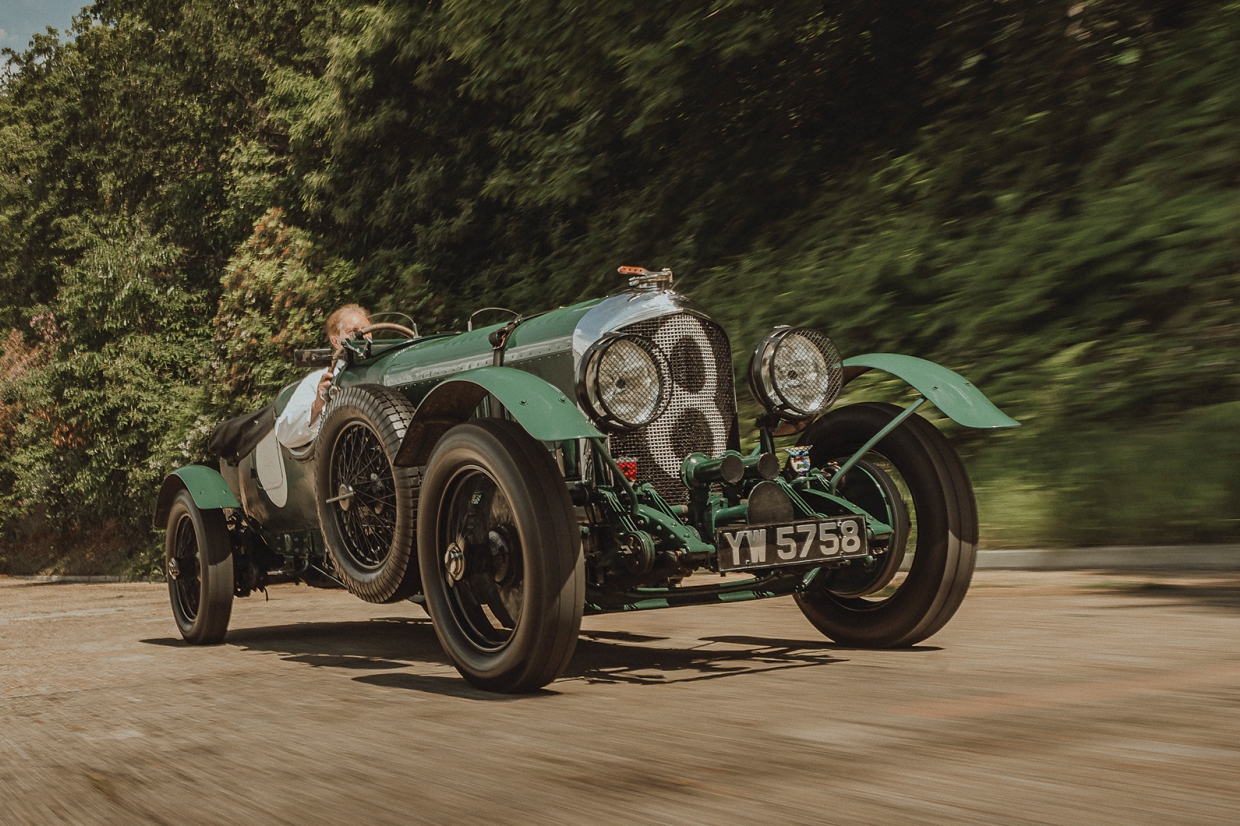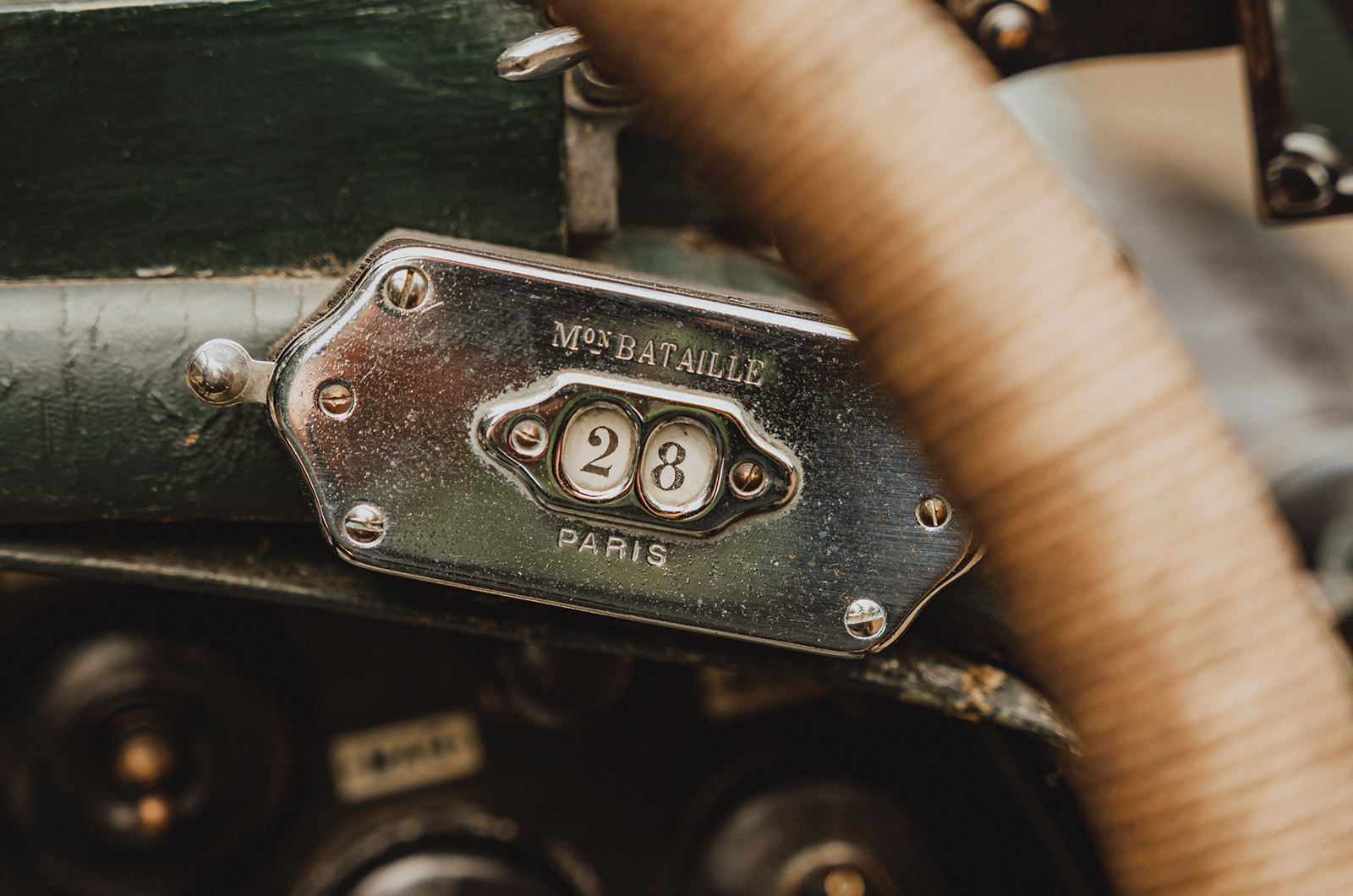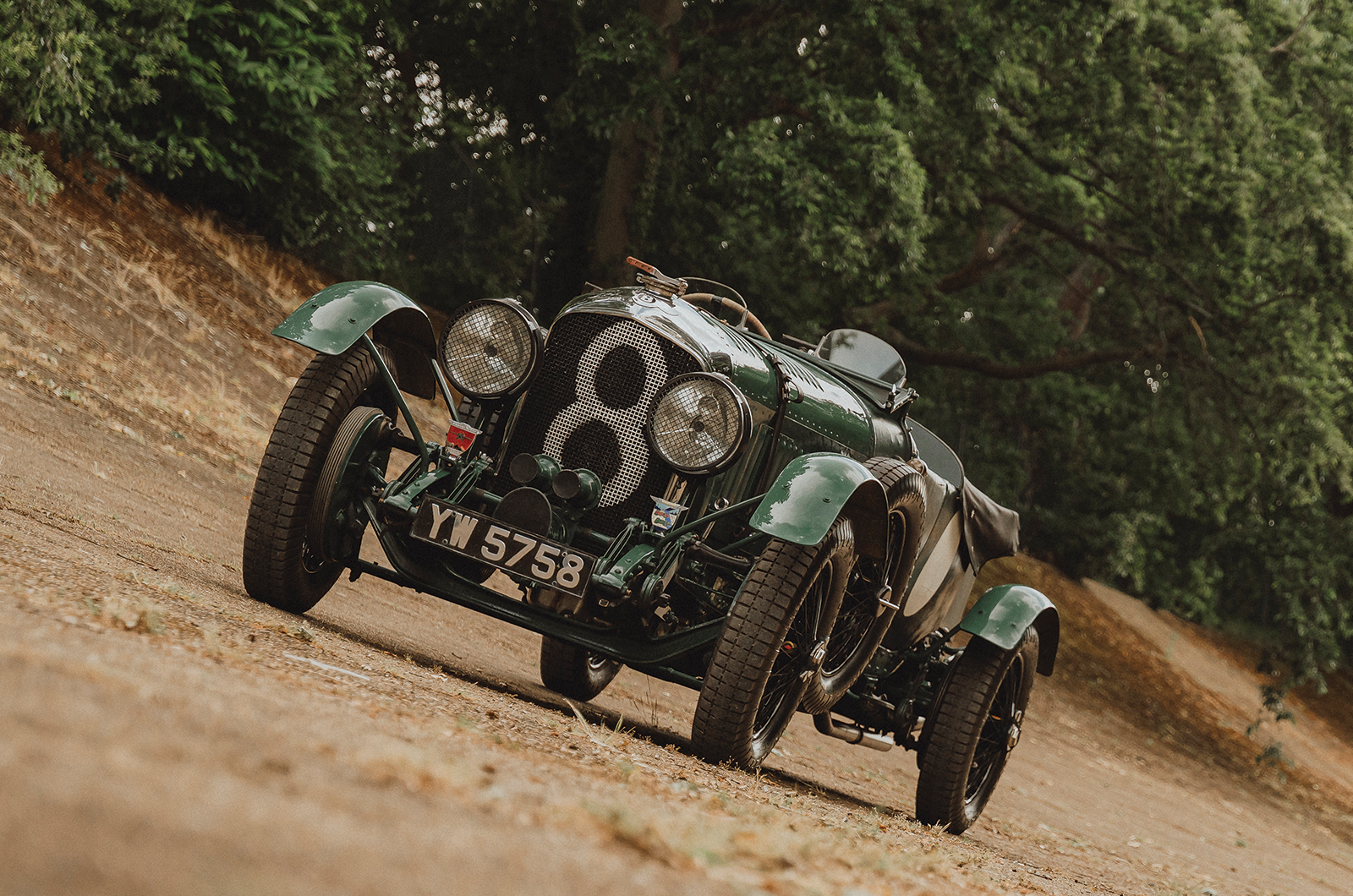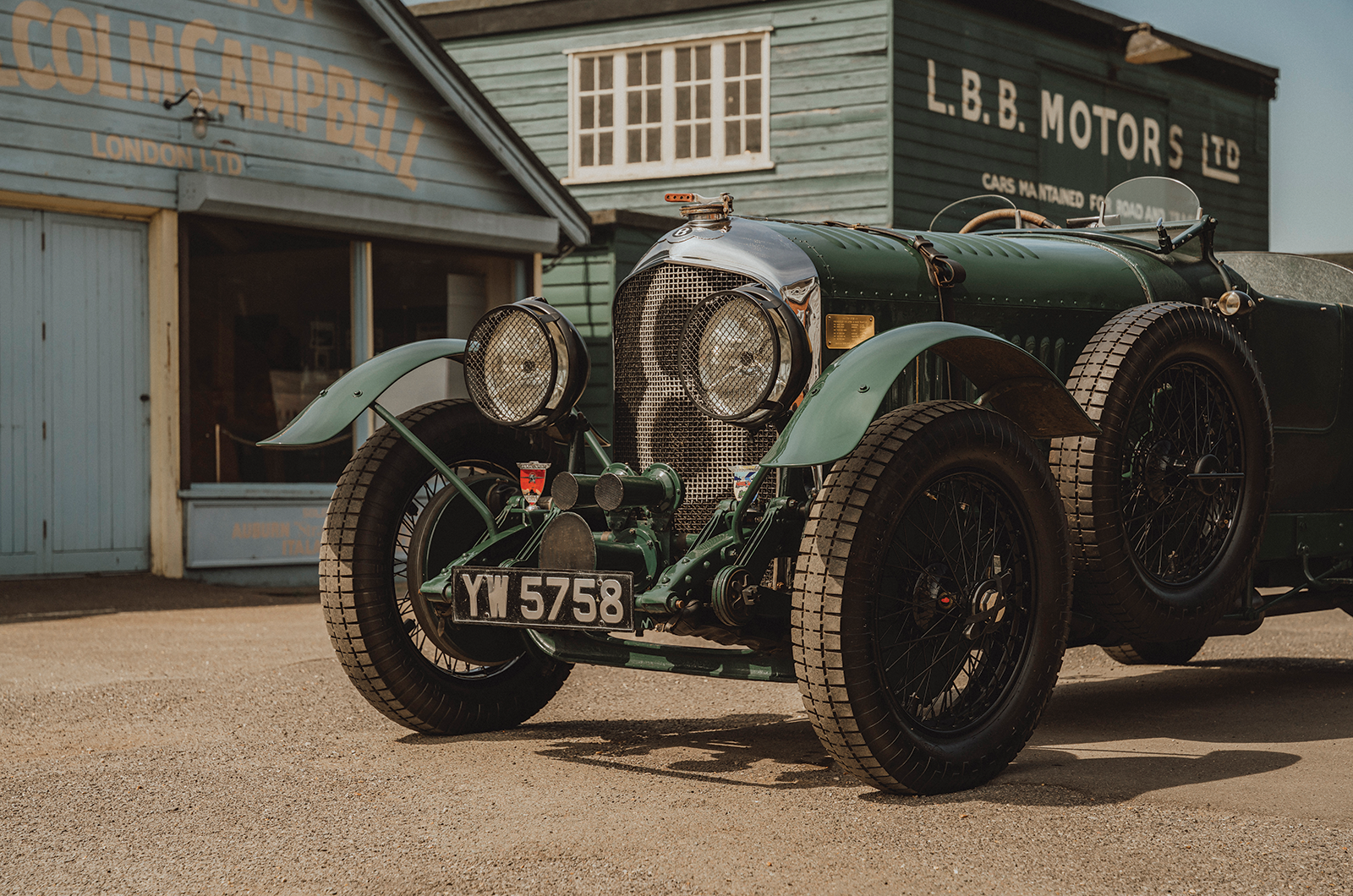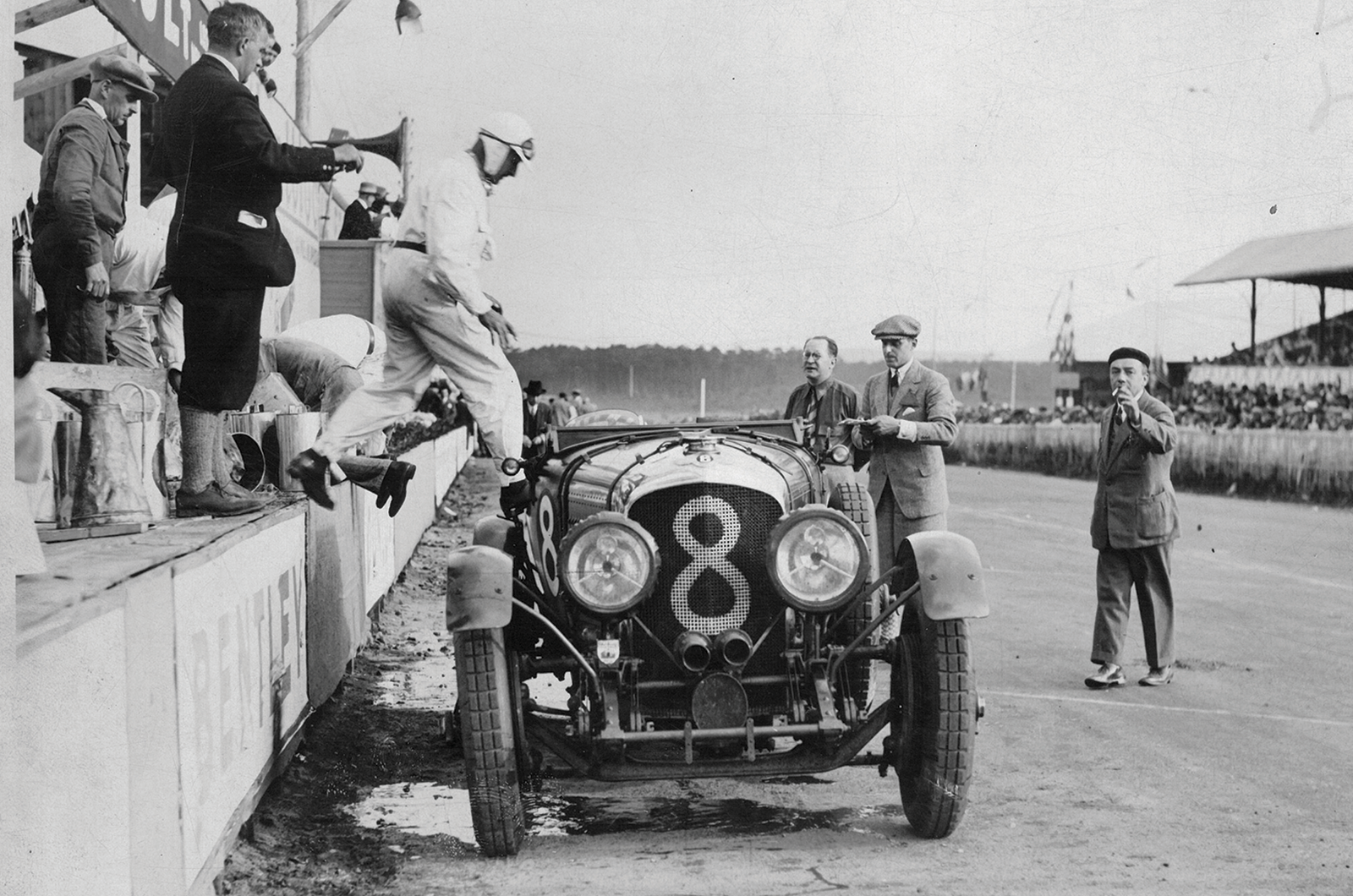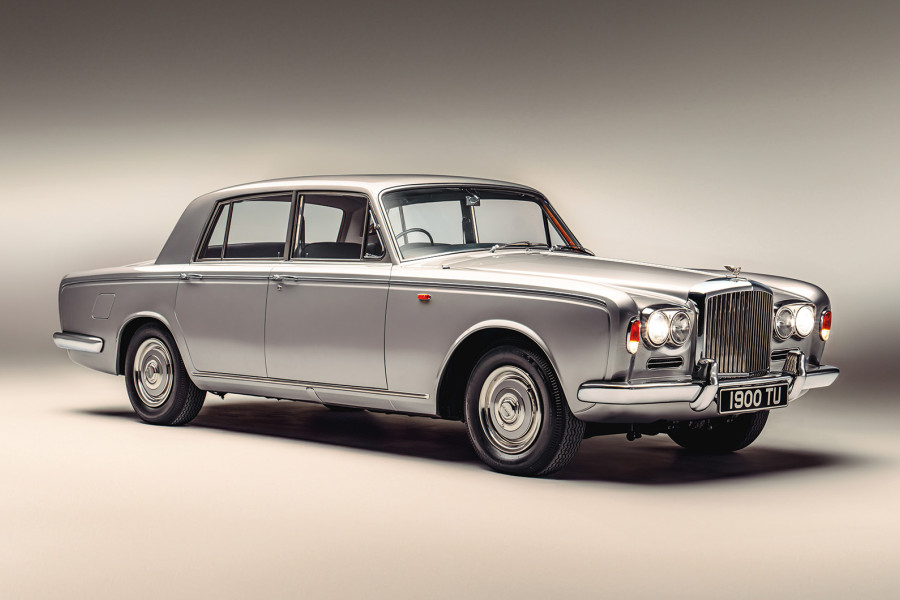And that is how the Bentley team completed the race, in close formation, with YW 5758 bringing up the rear and Old Number One first over the line.
‘Our’ car had covered a total of 157 laps, 17 behind the winning Speed Six.
YW 5758’s races were certainly not over, not by any means.
Well-known Bentley dealer Barclay bought the car after Le Mans in 1929, before selling it on to Lord Brougham Vaux the following year.
Frank Clement and this Bentley 4½ Litre at Le Mans in 1929 © WOBMF
It changed hands again in ’31, with one John Carlson taking ownership for the next two years, coinciding with a run of second and third positions in consecutive Gold Star Handicaps.
After another keeper, the car was bought by JP Emons, a founding member of the Bentley Drivers Club.
Emons, and the next three owners – along with previous custodians Harry Rose and daughter Ann Shoosmith, who took it on in 1957 – contributed to an almost continuous competition history, including the Le Mans Classic, Brighton Speed Trials, and races and hillclimbs too numerous to mention.
Jean Chassagne climbs out of the Bentley’s cockpit as Frank Clement jumps in during a pitstop at the Circuit de La Sarthe © WOBMF
However, current owner Dr Ian Andrews, who purchased the Bentley 25 years ago, has never been near a race track – at least, not to compete.
“I’m not a racing driver,” confesses Ian, “so there’s nothing I can add to its racing provenance.”
It is a pragmatic and honest admission, and one that will certainly help preserve what is now an extremely rare and hugely valuable motor car for the future – and preservation has been Ian’s watchword.
Resisting the temptation to simply restore the car to concours standard, he has focused on a programme of conservation, which has left the Bentley gloriously patinated and almost uniquely original compared with many other pre-war racers.
The Bentley 4½ Litre’s bonnet has leather straps
Ian is passionate about this, saying: “The car has such a pure history and spirit, and there’s an aura about it – a historical signature you just cannot buy.”
Which is why he initially turned down an approach from Bentley Motors in 2009 to display YW 5758 at Pebble Beach, thinking that its smart but non-concours appearance would leave judges nonplussed.
As it turned out, its authenticity was welcomed, and the car returned from California with a second-in-class trophy, the highest place that year for any Bentley team car among a star-studded group including 3 Litre, 4½ Litre, Speed Six and Blower entrants.
The Bentley’s 4.4-litre ‘four’ produced 130bhp in its racing specification
Inevitably, Bentley invited Ian and YW 5758 back to Pebble Beach Concours d’Elegance in 2019, where it took another second in class.
Ian has also won a Fédération Internationale des Véhicules Anciens (FIVA) award, in 2000, again for the car’s originality.
There have been no shortage of invitations to Goodwood’s Festival of Speed, where it has graced the Duke of Richmond’s hillclimb on many occasions.
Today, back at one of its spiritual homes, this prized Bentley looks magnificent.
The Bentley 4½ Litre is an imposing machine, even at a sedate pace
Tall, imposing and once again bearing on its radiator the painted ‘8’ that it wore at Le Mans nearly a century ago, YW 5758 is testament not only to Ian’s passion for maintaining its link with the past, but also to the sheer longevity of a well-used example of what Ettore Bugatti reportedly described as ‘le camion plus vite du monde’ (the world’s fastest lorry).
Everywhere you look, the car’s provenance is laid bare: the original eyebrow wings now frame 21in wires, after a spell running on 19s; removing the original leather driver’s seat cushion reveals a flap to access an inflatable bag inside, offering an early form of seat-height adjustment; a St Christopher medal is screwed to the passenger door card and just below it, to the side of the footwell, is a policeman’s light for emergency night-time repairs on track.
Ian also points to the original engine undertrays and, aft of the rear axle, the industrial-sized petrol tank, which retains its original lagging (all team cars’ tanks were so modified from 1924).
This Bentley 4½ Litre’s undertrays are original
And then we’re behind the hemp-wrapped, 20in steering wheel with which Clement and Barclay would have wrestled at this very location, 95 years ago.
Twin magneto switches are located to your right, and no fewer than seven dials are dotted haphazardly across the rest of the dash, the largest of which is a Jaeger tachometer redlined at 4000rpm.
Behind me, the rear passenger space is covered with a tonneau, secured to a bulkhead into which the front seats are inset – a unique arrangement that provides this car with a distinctive profile.
The Bentley 4½ Litre’s patina underscores its startling originality
Fire up the 4.4-litre ‘four’ and a majestically loud burble erupts from the straight-through exhaust.
Engage first in the H-pattern, inboard gate next to your right knee and press gently on the long, floor-mounted centre throttle: the 4½ Litre moves away at little more than a fast idle.
Despite weighing 3600lb – typical of a big tourer from this era – the Bentley feels more substantial, not just in the way it moves down the track, but also in the heft of its controls; a 30-98 racer feels lithe in comparison.
Take your time with the four-speed crash ’box and the gears mesh with well-oiled ease.
The Bentley 4½ Litre’s large Jaeger tachometer nestles behind the 20in steering wheel
We have limited time on Brooklands’ bumpy Finishing Straight, but it’s just enough to capture an essence of what WO’s team drivers would have endured in period (albeit at three times our speed), their focus razor-sharp, tucked down below the aeroscreen, chequered flag in sight.
Only in the genuine article can you come so close to experiencing such a thrill, and there is no better example of that than YW 5758.
Images: Max Edleston
Thanks to: Brooklands Museum; Allan Winn
Factfile
Bentley 4 ½ Litre
- Sold/number built 1927-1931/667
- Construction ash body frame with aluminium panels, separate steel chassis
- Engine all-iron, ohc monobloc 4398cc ‘four’ with four valves per cylinder, twin SU G5 ‘sloping’ carburettors
- Max power 110bhp (130bhp in racing spec)
- Max torque n/a
- Transmission four-speed manual, RWD
- Suspension: front H-section axle rear live axle; semi-elliptic leaf springs, friction dampers f/r
- Steering worm and wheel
- Brakes drums
- Length 14ft 4in (4380mm)
- Width 5ft 8in (1740mm)
- Height n/a
- Wheelbase 10ft 9in (3300mm)
- Weight 3600lb (1625kg)
- Mpg n/a
- 0-60mph n/a
- Top speed 90mph
- Price new n/a
- Price now £450-500,000 (non-competition car)*
*Price correct at date of original publication
Enjoy more of the world’s best classic car content every month when you subscribe to C&SC – get our latest deals here
READ MORE
Embiricos Bentley: unique Le Mans racer and family car
Future classic: Bentley Continental GT Speed
Lagonda V12 Rapide: WO Bentley’s masterpiece
Simon Hucknall
Simon Hucknall is a senior contributor to Classic & Sports Car
